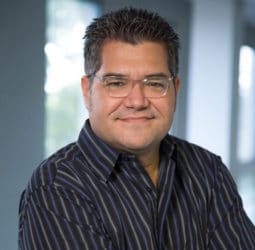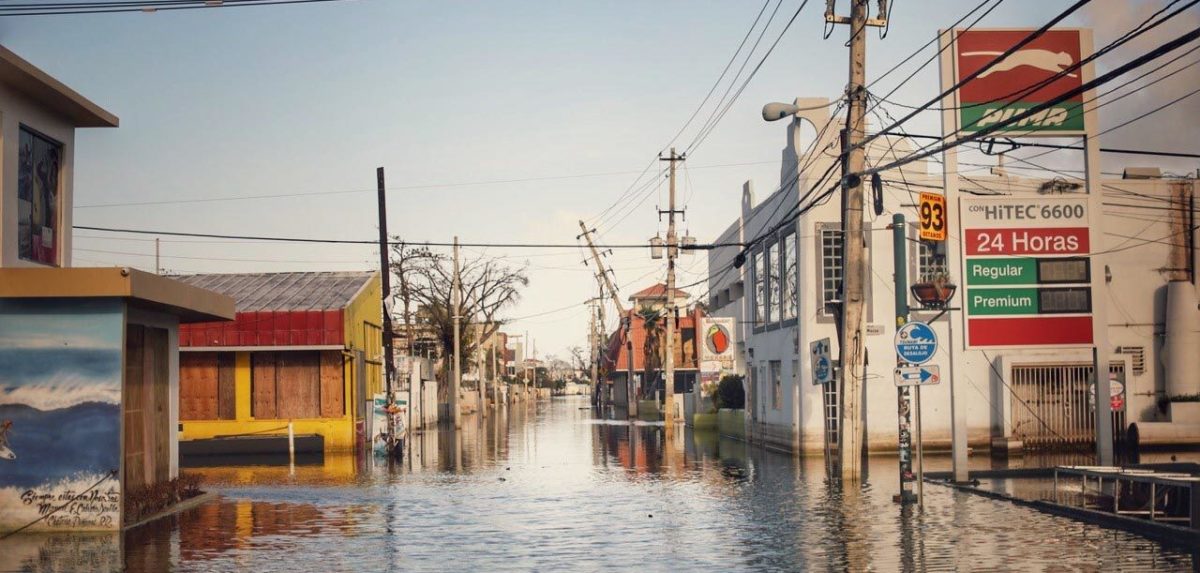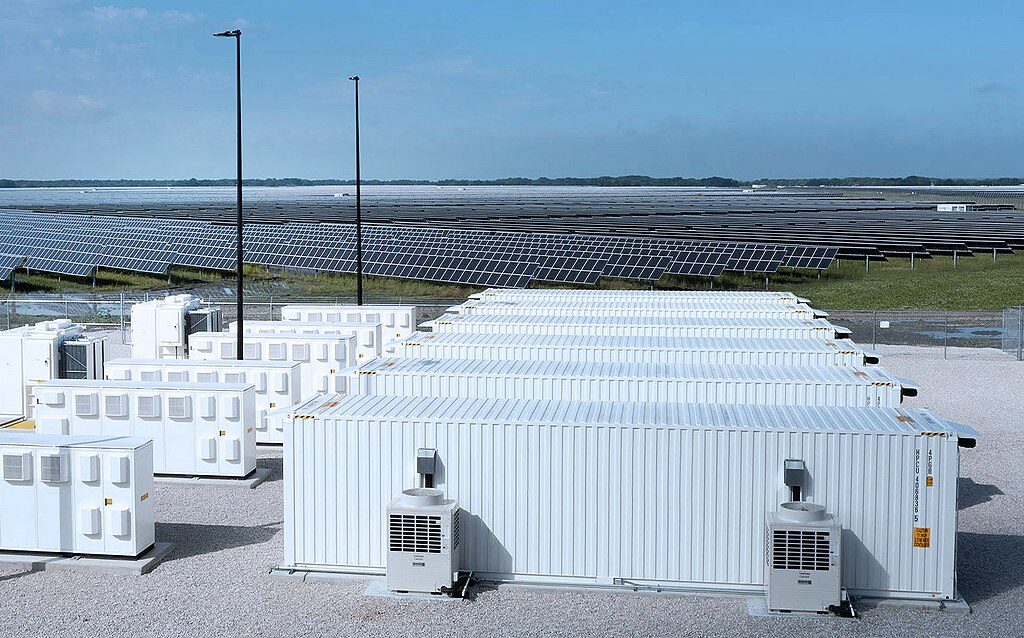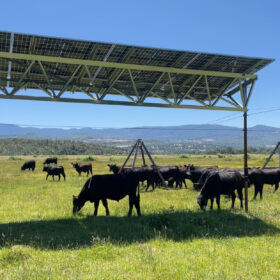By: Roy Torbert, principal, Rocky Mountain Institute and José Juan Terrasa-Soler, director, Resilient Power Puerto Rico

Two years have passed since the worst natural disaster ever to hit the Caribbean devastated Puerto Rico. Thousands of lives were lost due to the lack of basic health services in the immediate aftermath, and over 1 million people were without power for over three months, hampering the recovery process even more. Despite facing immense political and economic obstacles, Puerto Ricans remain steadfast in their resolve to rebuild more resilient communities and create a sustainable, independent electric utility that is better prepared for future storms. In the meantime, the threat of another prolonged disruption remains on everyone’s mind.
In July, an estimated 400,000 people took to the streets of Puerto Rico to demand and eventually secure the resignation of Governor Ricardo Rosselló. The preceding scandal had revealed pernicious insider influence, callous treatment of hurricane victims, and offensive misogyny. Amid this public political discourse, the congressionally appointed Financial Oversight and Management Board, responsible for ensuring that Puerto Rico pays its debts, negotiated a preliminary agreement with electric utility (the Puerto Rico Electric Power Authority, or PREPA) bondholders that proposes to increase electricity rates as much as 33 percent by 2023 to cover the utility’s (or corporation’s) debt obligations.

The “transition charges,” the largest portion of this increase, will apply to PREPA customers universally, including anyone installing their own distributed energy system. As a result, cost-effective, resilient distributed clean energy will be more unaffordable.
The government, now under the leadership of Governor Wanda Vázquez, must ensure that energy systems on the island benefit all residents. Doing so effectively will require careful long-term planning. In recent months, Puerto Rico’s electricity regulator (the Puerto Rico Energy Bureau) has overseen the development of a new integrated resource plan for the utility that may create a more resilient, clean, and cost-effective grid. Utility integrated resource plans are the most powerful tools to drive power sector investment and long-term planning. Yet other parts of Puerto Rico’s government propose to expedite costly, long-term liquefied natural gas import terminals.
With clean energy costs declining, such investments face significant stranded-cost risk, with no clear resilience benefits. These stranded costs will likely fall on the citizens of Puerto Rico. The combination of long-term, imprudent infrastructure investments and escalating electricity rates will only further prompt customers to leave the grid altogether. Those left on the system will likely have the least means to invest in their own solar systems. In this outcome, no one wins, and there is unequal access to energy increases.
To make matters worse, the grid today is unreliable. Persistent electrical outages stem from transmission lines running precariously across the mountainous center of the island and real-time operational challenges. Regarding life-preserving infrastructure, such as water pumping and filtration built to withstand the risk from power outages in both blue and black-sky conditions, Puerto Rican communities are taking matters into their own hands.
Today, much of Puerto Rico’s transformation happens from the bottom up, in communities. Microgrids—generating their own electricity locally and able to disconnect from the grid—are a major focus. Most of Puerto Rico’s microgrids utilize solar photovoltaic and battery energy storage; others employ hydropower, wind power, and diesel.
While hurricanes, tropical storms, floods, and other extreme weather events affect people across the income spectrum, low- and moderate-income communities are more vulnerable. When clean water, sanitation, lights, food, refrigeration, and health services are in short supply, the burden falls most heavily on those with the fewest resources. During blackouts, people who have chronic health conditions and who are in active care and rely on electricity for their treatments suffer greatly.
“Communities in Puerto Rico, particularly those in remote regions, resent the lack of a reliable source of energy. There are plenty of stories about the piles of broken appliances in their households and of having to coordinate everything before nighttime because ‘the light will go out.’ Communities are more than ready to transition to renewables and away from an expensive, unreliable utility,” says Joan Asencio, outreach coordinator with Resilient Power Puerto Rico (RPPR).
To help support the scaling of this transition, the independent nonprofits Rocky Mountain Institute (RMI) and RPPR, in partnership with local communities and other allies, have developed clean energy projects at approximately 40 community centers and schools across Puerto Rico. These institutions, with new battery and solar systems, will serve as critical shelters and response centers during hurricanes, without interruption.
In 2020, our organizations, along with many others, will seek to streamline and scale resilient distributed energy solutions to unlock philanthropic and private capital for durable, long-term investments. These systems will support lifesaving institutions in Puerto Rico that are needed to ensure protection from future storms and faster recovery.
Through innovative financing that opens the microgrid market for low- to moderate-income communities, effective and competitive procurement to keep costs down, and solutions to ensure the long-term sustainability of these microgrids, RMI and RPPR, along with other partners, are equipped to drive this transition forward.
With solar microgrid costs expected to continue to fall in the coming years, the task at hand is to ensure that the benefits of these trends are accessible to all Puerto Ricans, starting with the communities that need them most. Access to low-cost, sustainable power can keep the lights on at a school, preventing significant setbacks to children’s education. A solar microgrid can power clinics and cold storage for medicines, providing continued access to healthcare during a disaster. With resilient, renewable, and local power, financial institutions keep running, telecommunications towers stay live, and the local economy is protected from repeated and severe setbacks.
Access to clean, renewable, redundant, and independent energy generation is the cornerstone of a community’s capacity to engage in recovery initiatives, strengthen critical built and social infrastructure systems, and build a sustainable and equitable future for the citizens of Puerto Rico.
We encourage all partners and interested communities to engage with us in the work to come.
The views and opinions expressed in this article are the author’s own, and do not necessarily reflect those held by pv magazine.
This content is protected by copyright and may not be reused. If you want to cooperate with us and would like to reuse some of our content, please contact: editors@pv-magazine.com.








“The “transition charges,” the largest portion of this increase, will apply to PREPA customers universally, including anyone installing their own distributed energy system. As a result, cost-effective, resilient distributed clean energy will be more unaffordable.”
Take a good look U.S., do YOU think there isn’t the same duplicity being visited upon the ratepayers by the rote electric utilities across the U.S. ? So what, PREPA can’t be disassembled in bankruptcy court and the assets sold off to create a housing solar PV energy fund to get the job done without the usury? This hurricane Maria “experiment” has proven PREPA as stumbling incompetents. The Government “understanding” of such incompetence by allowing it to continue until the people rise up and “demand” change. Instead of trying to make alternative distributed energy “more unaffordable”, perhaps the question to ask, is how many times does this have to happen until unaffordable IS the life threatening proposition.
Let me say up front that I love my friends and fellow citizens in PR. I do not want to see anyone suffer which I why so many of us volunteer on the island.
There are some problems that are island problems, and the power grid is (largely) one of them. Outside investment and innovation is a long term solution, but there are some things that are local solutions.
PR’s transmission lines are surrounded and, in many cases, covered in vegetation because of the island’s “green” policies. I’m not a subject matter expert, but it would seem that clearing back to an easement line is a simple, albeit partial solution.
For those who get off the beaten path and into many barrios, all you need to do is look upward to see poorly done legal and illegal power line splicing.
The island government has a land and property titling deficiency. This allows people to “squat” at properties and “borrow” electricity from neighbors creating a nightmare for municipality billing.
Much like on the mainland, the island has its share of unscrupulous contractors. The commonly accepted electrical code can be defined as very fluid, at best. Municipality permits seem to be mostly nonexistent.
There are lots and lots of big problem/big solution matters. But there are plenty of more easily implementable solutions that can help along the way.
One of those easily implementable solutions which could provide real resiliency and fewer outages is distributed solar and storage.
Less dependence on centralized generation means less transmission lines to maintain, and less to go down in a storm.
This is an article written shortly after Maria destroyed most of the infrastructure of Puerto Rico.
http://www.greenmatters.com/news/2017/10/04/Z1o8L7g/puerto-rico-farm-solar-panels-hurricane-maria
Moral of the story, those with vision and the wisdom to implement this vision will persevere. Those who depend on “others” to take care of their needs will flounder. Were do you want to be on the “food chain”?